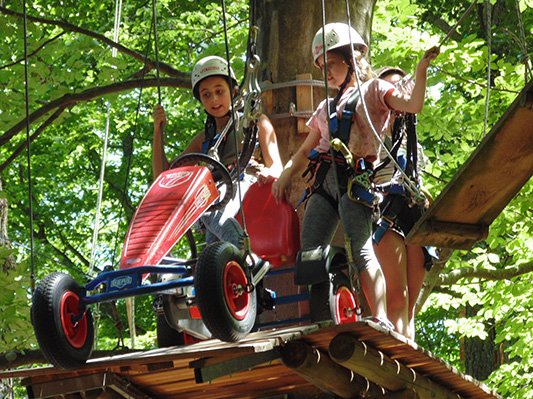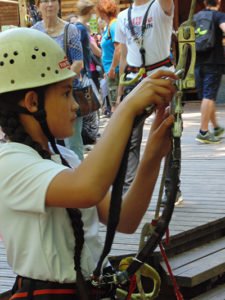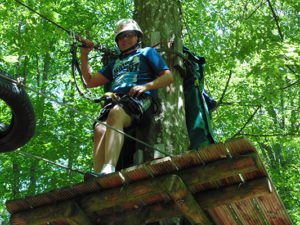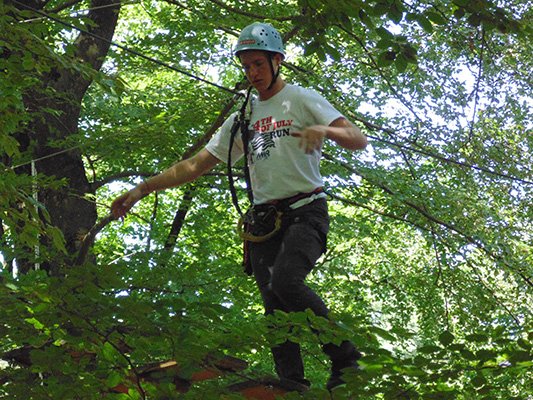
School Liaison Office
Photos by Joe Holder, School Liaison Officer
USAG Stuttgart
Stuttgart military community teens recently had the opportunity to experience real life resilience from three master resilience trainers through the USAG Stuttgart’s Child and Youth Services, the Patch Youth Center and the School Liaison Office.
Through a generous Teen Resilience kickstart grant from Installation Management Command’s G9 (financial management), Mike Sampson, director, Youth Center, along with school liaison officers Brian Pappas and Joe Holder, took 19 teens and three staff members to the Fun Forest Ropes Course in Kandel, a town near the French border in the Gemmersheim district of Rhineland-Palatine. The experience taught teens how building confidence in themselves, their connection with others, control over themselves and their way forward can help them to survive and thrive in everyday situations.

“Stuttgart CYS has kick-started its R2 program,” Holder said.
Teens learn best through adult modeling, experiential learning opportunities and peer interaction. The ropes course provided the perfect learning environment for them to learn the ready and resilient skills of Real Time Resilience (RTR), energy management and “Hunting the Good Stuff.”
Through RTR, they considered possible counterproductive thoughts to the many tasks involved with a ropes course and created new thoughts that would “fight back” during their upcoming tasks-at-hand, such as climbing a ladder, first stepping onto a rope, attaching to a zipline and more. The real benefit came when they had the chance to practice this skill in action, experiencing each task and “fighting back” with thoughts that helped them successfully conquer the course.
Energy management skills, primarily deliberate breathing, allowed teens to slow themselves down, decrease anxiety and gain control as they maneuvered from tree to tree.
After one teen said “I can’t do this,” she took some deep breaths and was able to slowly and deliberately take her first step before continuing across the rope. This scene was repeated as many youth got stuck and then used deliberate breathing to regain focus and continue.

Hunting the Good Stuff, or finding the value in the good things that occur throughout the day, helped the students to become aware of the big and small moments every day, as well as the people who matter to them. This focus on the positive helped them notice their own personal accomplishments; it’s also how they contributed to the well-being of their peers.
The teens expressed how the resiliency skills helped build confidence, connection, and control. They conquered fears and conquered scary obstacles while helping each other, ending up feeling stronger physically and mentally. In the process, they made new friends.
Learning ready and resilient skills in a real-life situation provided teens an understanding of how resilience plays a role in their ability to complete the ropes course. They also learned that these skills can be applied to everyday situations, such as presenting in front of a class, having a difficult conversation, or playing a sport or instrument.
“CYS will facilitate a ready and resilient family outreach activity in the near future for registered teens and their parents,” Pappas said.
For more information regarding the ready and resilient program and future outreach activities, visit the Patch Youth Center, Bldg. 2337, or call 430-7204 or 0711-680-7204. Alternately, visit the School Liaison Office in Bldg. 2347, Patch Barracks, or call 430-7465 or 0711-680-7465.

“How ready and resilient are you?” Holder asked.
